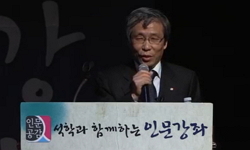In this study, the concept of environmental-friendly architecture, where environment is importantly regarded as a design concept in modern architecture and the meaning of boundary are examined. To apply properly design methodologies along with the imp...
http://chineseinput.net/에서 pinyin(병음)방식으로 중국어를 변환할 수 있습니다.
변환된 중국어를 복사하여 사용하시면 됩니다.
- 中文 을 입력하시려면 zhongwen을 입력하시고 space를누르시면됩니다.
- 北京 을 입력하시려면 beijing을 입력하시고 space를 누르시면 됩니다.

환경 친화 건축에서 나타나는 경계의 의미 변화에 관한 연구 = Study on the change of the meaning of boundary shown on environmental-friendly architecture
한글로보기https://www.riss.kr/link?id=A99642545
- 저자
- 발행기관
- 학술지명
- 권호사항
-
발행연도
2010
-
작성언어
Korean
- 주제어
-
등재정보
KCI등재
-
자료형태
학술저널
- 발행기관 URL
-
수록면
169-178(10쪽)
-
KCI 피인용횟수
1
- 제공처
-
0
상세조회 -
0
다운로드
부가정보
다국어 초록 (Multilingual Abstract)
In this study, the concept of environmental-friendly architecture, where environment is importantly regarded as a design concept in modern architecture and the meaning of boundary are examined. To apply properly design methodologies along with the importance of environment, the concept of environmental-friendly architecture should be first correctly established. And as the recent rapid development of technologies provides new possibilities for environmentally-friendly architecture, it is needed to have a new boundary concept and the interpretation of the meaning of boundary differentiated from the one of existing architecture. Recently the meaning of boundary is expanding its range to the relations with its neighboring environment beyond the relations with in and out of a space and has also the role as a medium for exchange and communication instead of breaking-off. Therefore, the boundary of environmental-friendly architecture alongside physical boundary is extended to the area for communication. Here, a basic boundary of architecture is maintained, but its meaning and expressions get natural shapes. The study deals with the analysis of the concept of environmental-friendly architecture and its changes from the perspective of times, environment and social backgrounds and seeks its appropriateness centered on environmental-friendly architecture since 1980s when the issues of human and environment were raised in earnest.
목차 (Table of Contents)
- Abstract
- 1. 서론
- 2. 환경 친화 건축의 개념 고찰
- 3. 환경 친화 건축의 경계의 의미
- 4. 사례분석을 통한 환경 친화 건축에서 나타나는 경계의 특성
- Abstract
- 1. 서론
- 2. 환경 친화 건축의 개념 고찰
- 3. 환경 친화 건축의 경계의 의미
- 4. 사례분석을 통한 환경 친화 건축에서 나타나는 경계의 특성
- 5. 결론
- 참고문헌
참고문헌 (Reference)
1 홍종철, "현대건축의 생태학적 디자인 경향에 관한 연구" 서울대 2003
2 안우진, "현대건축의 새로운 흐름-공간의 형식과 유기성" 기문당 2010
3 이윤희, "현대건축에서의 생태적 건축공간과 자연과의 관계 양상에 관한 고찰" 한국실내디자인학회 13 (13): 56-65, 2004
4 한혜련, "행태학적 개념을 도입한 실내 조경 디자인에 관한 사례조사 연구-고층 오피스 건물의 로비 공간을 중심으로" 5 (5): 2005
5 기장도, "하이테크건축 설계요소의 환경 친화적 변화에 관한 연구" 세종대 2009
6 김우영, "테크놀로지의 변화에 따른 현대건축의 대응에 관한 연구" 17 (17): 2001
7 최순섭, "타자적 영역을 점유한 시선이 형성하는 경계감각에 관한 연구" 서울대 2003
8 이경회, "친환경건축개론" 기문당 2003
9 연세대학교 밀레니엄환경디자인연구소, "친환경 공간디자인" 연세대학교출판부 2003
10 양승화, "초표피 건축의 미디어적 특성에 관한 연구" 경기대 2009
1 홍종철, "현대건축의 생태학적 디자인 경향에 관한 연구" 서울대 2003
2 안우진, "현대건축의 새로운 흐름-공간의 형식과 유기성" 기문당 2010
3 이윤희, "현대건축에서의 생태적 건축공간과 자연과의 관계 양상에 관한 고찰" 한국실내디자인학회 13 (13): 56-65, 2004
4 한혜련, "행태학적 개념을 도입한 실내 조경 디자인에 관한 사례조사 연구-고층 오피스 건물의 로비 공간을 중심으로" 5 (5): 2005
5 기장도, "하이테크건축 설계요소의 환경 친화적 변화에 관한 연구" 세종대 2009
6 김우영, "테크놀로지의 변화에 따른 현대건축의 대응에 관한 연구" 17 (17): 2001
7 최순섭, "타자적 영역을 점유한 시선이 형성하는 경계감각에 관한 연구" 서울대 2003
8 이경회, "친환경건축개론" 기문당 2003
9 연세대학교 밀레니엄환경디자인연구소, "친환경 공간디자인" 연세대학교출판부 2003
10 양승화, "초표피 건축의 미디어적 특성에 관한 연구" 경기대 2009
11 올리히 벡, "위험사회-새로운 근대(성)을 향하여" 새물결 1997
12 강희정, "에코테크(ECO-TECH: Ecology+Technology) 디자인의 공간 적용 방안에 관한 연구" 건국대 2004
13 배우영, "렌드스케이프 건축에 나타난 경계에 관한 연구" 서울대 2002
14 임은지, "내.외부 전이공간으로서 중간공간의 환경 친화적 건축형태 구성에 관한 연구" 한양대 2003
15 이정민, "공간디자인에 있어서의 환경친화와 Green Amenity의 역할에 관한 연구- 그린(Green Materials)을 이용한 에콜로지디자인을 중심으로 -" 한국디자인학회 16 (16): 14-148, 2003
16 권영걸, "공간디자인 16강" 국제 2001
17 호사카요우이치로우, "경계의 형태 그 건축적 구조" 한국산업훈련연구소 1999
18 Kengo Kuma, "건축과 환경"
19 우승구, "生態學的 패러다임에 기초한 제로 에너지 공간 연구" 건국대 2002
20 James Wines, "Green Architecture" TASCHEN 2008
21 김종인, "20세기 현대건축에 나타난 환경 친화적인 하이테크(High-tech)에 관한 연구" (27) : 2001
동일학술지(권/호) 다른 논문
-
- 한국실내디자인학회
- 김성기(Kim, Sung-Kee)
- 2010
- KCI등재
-
- 한국실내디자인학회
- 김미실(Kim, Mi-Shil)
- 2010
- KCI등재
-
귀납적 일반화를 이용한 형태지식의 습득과 디자인에 관한 연구
- 한국실내디자인학회
- 차명열(Cha, Myung-Yeol)
- 2010
- KCI등재
-
- 한국실내디자인학회
- 정태용(Chung, Tae-yong)
- 2010
- KCI등재
분석정보
인용정보 인용지수 설명보기
학술지 이력
| 연월일 | 이력구분 | 이력상세 | 등재구분 |
|---|---|---|---|
| 2027 | 평가예정 | 재인증평가 신청대상 (재인증) | |
| 2021-01-01 | 평가 | 등재학술지 유지 (재인증) |  |
| 2018-01-01 | 평가 | 등재학술지 유지 (등재유지) |  |
| 2015-01-01 | 평가 | 등재학술지 유지 (등재유지) |  |
| 2011-01-01 | 평가 | 등재학술지 유지 (등재유지) |  |
| 2009-01-01 | 평가 | 등재학술지 유지 (등재유지) |  |
| 2007-01-01 | 평가 | 등재학술지 유지 (등재유지) |  |
| 2005-01-01 | 평가 | 등재학술지 유지 (등재유지) |  |
| 2002-01-01 | 평가 | 등재학술지 선정 (등재후보2차) |  |
| 1999-07-01 | 평가 | 등재후보학술지 선정 (신규평가) |  |
학술지 인용정보
| 기준연도 | WOS-KCI 통합IF(2년) | KCIF(2년) | KCIF(3년) |
|---|---|---|---|
| 2016 | 0.45 | 0.45 | 0.45 |
| KCIF(4년) | KCIF(5년) | 중심성지수(3년) | 즉시성지수 |
| 0.45 | 0.42 | 0.758 | 0.19 |





 ScienceON
ScienceON DBpia
DBpia






